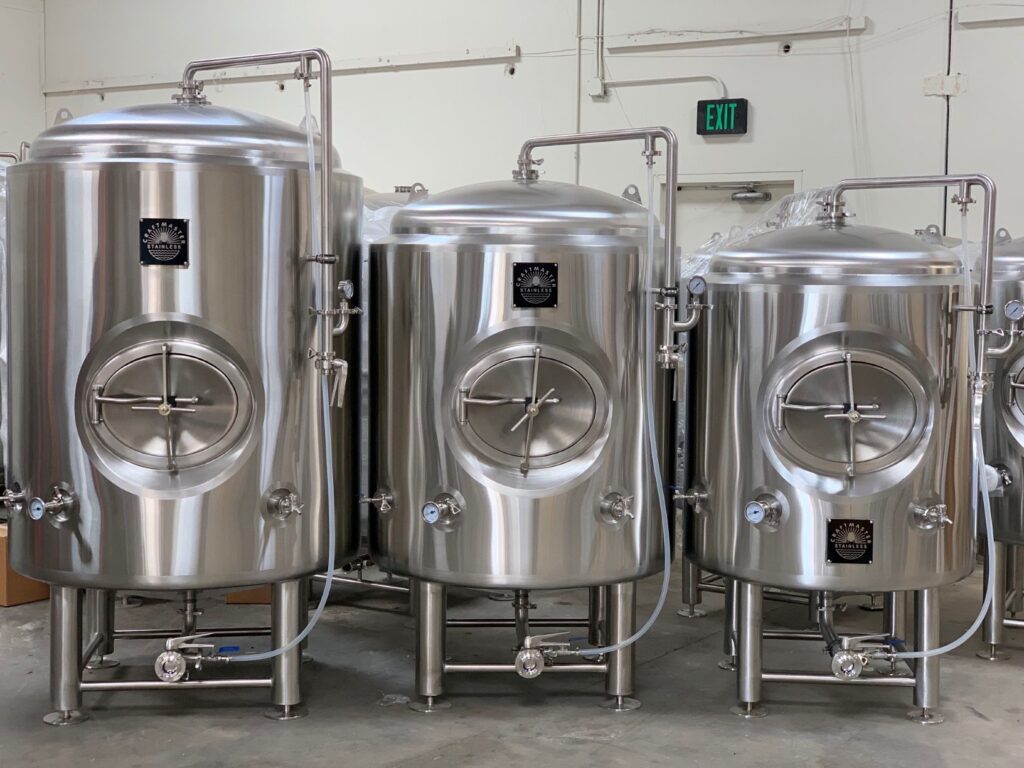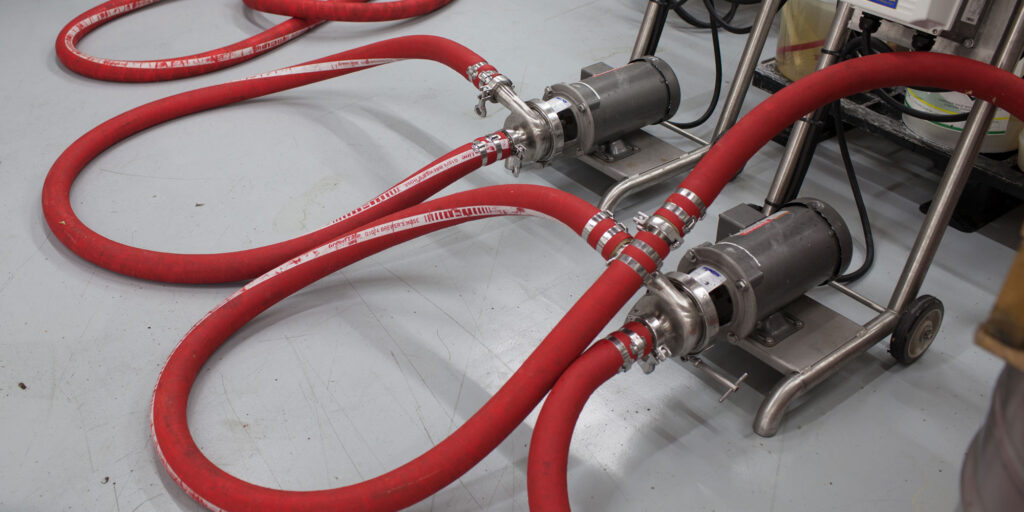By: Gerald Dlubala
Testers, meters, monitors and probes make it possible for craft alcohol producers to raise their standards and improve their craft. The overall move from older, unreliable, visual-based testing to greater process control with more accurate and precise analysis means repeatable sample measurements and more product consistency for reporting purposes.
Quality Control and Analysis at Your Fingertips
“Measurement and meter use within the distillery are critical for quality analysis and quality control,” said David Zavich, Applications and Technical Support Manager for Mettler Toledo. Mettler Toledo is a leading provider of precision instruments and research and development-related services, quality control and production across numerous industries.
“At the very least, the distiller should possess a quality pH meter and density meter for help in making informed decisions throughout the production process, and know if and when to intervene and make any needed adjustments. The best way for a distiller to know when the mash is within the acceptable pH range – 5.2-5.8, 5.4 being optimal – for the enzymatic activity to convert starches to sugars is with a quality pH meter. It also helps monitor the critical fermentation activity of a distiller’s beer, when pH should decrease to 4.0-4.5 as yeast metabolize ammonium ions and excrete organic acids. A pH remaining above 5.0 indicates a lack of activity, and pH below 4.0 may indicate the presence of undesirable bacterial contamination.
“Benchtop density meters are invaluable for determining the proof and quantity of distilled spirits for TTB reporting purposes,” said Zavich. “Handheld versions can determine mash extract efficiency before fermentation, measure distiller’s beer to ensure fermentation is complete, calculate alcohol by volume, and measure proof during the distilling process that aids in making cuts.
“To measure density, the distiller has three available options,” said Luke Soposki, marketing specialist for Mettler Toledo’s Analytical Chemistry division. “They can use a hydrometer, which is inexpensive and offers several industry measurement scales, but they are fragile, dependent on the user for results and have longer measurement cycles. Pycnometers are also inexpensive and can achieve a level of accuracy, but they require a higher level of training and have limited measurement scales available. The best choice is a digital density meter. They are more expensive but easier to use, more consistent and reliable, and have a shorter measurement cycle. They cover a wide density range, have automatic temperature compensation, and are available in a variety of models to meet the specific needs of the distiller.”
“Density meters are quite durable,” said Zavich. “Benchtop units are quite self-sufficient with a suggested yearly preventative maintenance. They have an expected lifespan of around 10 years, but we’ve seen operational units well beyond that mark. Handheld units have no specified terms of use but are equally self-sufficient and expected to last many years under normal use.”
“The main thing is to ask questions before purchasing,” said Soposki. “Mettler Toledo offers a full suite of testing solutions that include density meters, refractometers, titrators, spectrophotometers and pH meters. We can also talk about automation and multi-parameter options when needed. Distillers’ needs are always evolving, and we know that they are still looking for an easier way to release product after testing, specifically with TTB approved handheld density meters. Ask specific questions about the instruments related to your process applications. Ask for a demo, either onsite, virtually, or even in a try-and-buy program when available. Look for manufacturers that can support you across your business needs and offer service and support beyond just the equipment purchase.”
All in for Peace of Mind
Or, you could go all in and buy the Rudolph Research Densitometer, the same machine that the TTB uses to send off samples for auditing. That’s what Greg Pope, Master Distiller of Missouri Ridge Distillery, did when he opened his distillery in Branson, Missouri.
“It was pricey for sure,” said Pope. “At the time, it was a huge investment, around $6,500, plus another couple of thousand in training costs. It easily outpaced the cost of other densitometers, but it’s the one piece of equipment I thought was worth it based on time value savings, and in our case specifically, the frequency of the breakage factor of common hydrometers. I use it every day for my spirits as well as my beers, so for me, it’s a quality investment.”
Accuracy and repeatability are always priorities in the distillery, and Pope told Beverage Master Magazine that he’s tried all the gadgets, getting hands-on experience at American Distilling Institute conferences and conventions. With the Rudolph Research Densitometer, he proofs a barrel in 25 to 30 minutes versus the 24 to 36 hours needed using traditional proofing methods.
“When I got audited, and the agents saw that we have the same equipment that the TTB uses, we were already in favorable standing for trying to do the right thing,” said Pope. “This one piece of equipment holds all of our historical data that is time-stamped, properly labeled as tester batches, bottling runs, etc. and is transferable to a thumb drive for easy auditing. It’s designed for upgrading rather than obsolescence, saving money in the long run. We added the refractometer package when it came available for true and corrective proofs on our line of cordials.”
Pope said that the training was an intensely monitored, two-day affair, but by the end of those two days, he was comfortable using the equipment for all of his applications and performing all necessary tests independently.
“The only hiccups I’ve had with this equipment has honestly been because of human error,” said Pope. “Our machine is set to give us a recalibration reminder every Monday at midnight, and we can’t do any further testing until that recalibration is completed. The process is easy, and then we’re good to go for another week. This densitometer also has international settings, and because we export our bourbon to the U.K., we can provide their required test results.”
Pope said that he also helps other distillers by testing and auditing their samples, providing another way to grow and support the distilling community.
Quality H2O: Good Water Equals Good Beer
“That’s what brewers will tell you, and it’s certainly a good rule to follow,” said Mike McBride, marketing, IT and social media manager for Industrial Test Systems, a leading American manufacturer of instruments and chemistries designed to test water quality parameters. “It’s just a fact because beer is over 90% water, so it follows that good water makes for good beer.”
Industrial Test Systems offers their popular eXact iDip Smart Photometer and their eXact pH meter to help brewers stay on top of their water parameters.
“Visual testing only gives the end user a baseline guide or range versus digital testing that is much more precise and provides exact, repeatable results,” said McBride. “Our meters bring those types of laboratory quality results to you, and that’s important because of the many different tests performed on the water within a craft brewery. One example is testing for water hardness because different beers require different levels. Dark beers require harder water, while lighter beers use softer water. You have to have an accurate, quality test to determine what type of water you’re using.”
Brix and pH Meters: A Brewer’s Best Friend
“Measuring pH and Brix levels in brewing is essential,” said Jason Brown of Milwaukee Instruments. “Both units are a must because those measurements ultimately determine the type of beer you will brew, how the flavor will turn out, and what percentage of alcohol the brew possesses. To measure alcohol content with a meter like our MA871 digital Brix refractometer, you take an initial Brix reading of the unfermented wort and then a follow-up reading once fermentation is complete. Those values are plugged into a conversion chart to determine the percentage of alcohol in your final product. Taking pH readings on a meter like our MW102 within the brewing process takes place from the beginning of the brewing process to the end, using it for multiple applications and processes.”
Brown told Beverage Master Magazine that brewmasters typically already have basic knowledge of pH testers and refractometers. Still, even if they are new to the game, Milwaukee Instruments provides user-friendly equipment, with complete YouTube tutorials instructing the user on the operation, maintenance, storage and calibration of the meters. Most units come with a two-year warranty on the base unit and six months on the electrodes. Their bench meters offer data logging that is an advantage over comparable handheld units.
“It’s recommended that both types of meters be calibrated before each use to maintain accuracy across all samples tested,” said Brown. “Our units can be calibrated by the end-user with no issues.”
Steam & Water Flow Measurement: Going with the Flow
“Given the need for accuracy, consistency and repeatability, brewers should always choose the highest quality meter they can afford,” said Marc Bennett, regional sales manager for McCrometer, Inc., worldwide providers of precision flow meters for liquid, steam and gas applications. “Flow metering is all about optimizing production to give the brewer consistent and reliable results through understanding the precise temperatures, pressures and flow being used.
“The best way to measure steam is through equipment like our V-Cone Meter. It helps a brewer understand the precise temperature, flow and measurement of their team processes, allowing them to optimize their consistency,” said Bennett. “We know craft brewers are frequently tight on space, so our V-Cone Meters are designed for tight fit and retrofit applications while handling most operating environments. Some of the largest, most well-known breweries use V-Cone meters for steam measurement, but they are very applicable for smaller brewers as well.”
McCrometer also offers a line of electromagnetic flowmeters (MAG) for accurate water flow measurement. Their pumps rely on velocity and pipe diameter information to determine flow over wide ranges with high precision accuracy. Their SPI MAG measures everything from in-flow water through wastewater, including industrial flow processes involving potable water, slurries, sludge, cooling water and pulp stock.
“Whatever the choice, brewers should always choose U.S. manufactured meters,” said Bennett. “U.S. manufactured meters are often more readily available and more quickly shipped than the non-U.S. manufactured counterparts. If you choose a high-quality meter with a long lifespan and U.S.-based support, you’re getting a great return on your investment. The last thing you need or want is to have your brewing process impacted or even halted because of support issues.”
Bennett told Beverage Master Magazine that McCrometer meters have great attributes, including the aforementioned long lifespan and support. Perhaps one of the best advantages of both their MAG flow meters and the V-Cone DP meters is the advantage of having no maintenance or repair schedules.
“That’s a big load off of a brewer’s calendar and his mind,” said Bennett. “Our new ProComm converter on the MAG meters is available with built-in verification that uses stored data to check a meter’s operation against its baseline. That’s true peace of mind. Our V-Cone Meters have been around and studied in applications that are a lot more rugged than what the typical brewery would put them through and have shown no shift whatsoever in their calibration coefficient.”










